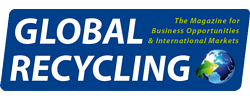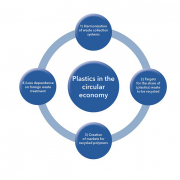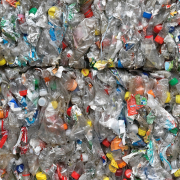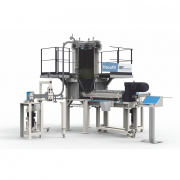The Recycled Polyolefin Market is Set to Grow
According to Canada- and India-based market research company Towards Chem and Materials, a sister firm of Precedence Research, the global recycled polyolefin market size is estimated at 66.67 billion US-Dollar in 2025.
By 2034, the market is expected to hit around 144.2 billion US-Dollar, growing at a compound annual growth rate (CAGR) of 8.95 percent over the forecast period. As stated, the market is experiencing significant expansion due to the movement to sustainable packaging, lightweight automotive, growing infrastructure, and conversion to more recyclable polymer-based solutions. It has continued to grow with higher environmental considerations, government mandates, and increasing consumer, brand owner, and retailer demand for sustainable solutions. Improvements in related sorting technologies and recycling technologies have continued to enhance the end-use quality of recycled polyolefins.
Recycled-content laws strengthening demand
Governments are promoting recycled polyolefin adoption, with recycled-content mandates making it law and enforceable, Towards Chem and Materials pointed out. In June 2025, India, had released a draft of the Plastic Waste Management (Second Amendment) Rules, requiring the Category I rigid plastic packaging to have a minimum of 30 percent recycled content in 2025-26, with targets to reach 60 percent in 2028-29. And in the USA, California’s Assembly Bill (AB) 793 mandates recycled content standards for plastic beverage containers to include 25 percent PCR (post-consumer resin) in 2025; by 2030 the packaging must reach 50 percent PCR. “These governments provided mandates create un-assessable demand for recycled HDPE and PP, which means packaging producers and resin suppliers can use this buying behavior to take risks, invest in scalable polyolefin recycling infrastructure and material supply, even without market-research summaries.”
AI and quality
Artificial intelligence is beginning to bring higher levels of efficiency and quality into the recycled polyolefin market, Towards Chem and Materials informed. While India-based Ishitva Robotics is seen as “leading in AI-powered waste sorting using NIR and machine learning methods to identify HDPE, LDPE, and PP from mixed waste streams accurately”, Europe would be home to one of the largest organizations working on a similar project. There, involving an AI-powered robotic solution called OMNI – provided by Recycleye and Valorplast – the technology had been capable of recovering food-grade PP with over 95 percent purity. “Multinational firms like Borealis and TotalEnergies will be investing in AI-based systems to enhance sorting, traceability and end-product quality to continue to bridge the gap to virgin-grade standards and build the role of recycled polyolefins in the circular economy.”
Market Opportunity
The report provider is convinced that one main opportunity for the recycled polyolefin segment is the growing demand for sustainable packaging found in sectors like food & beverage, personal care, and even e-commerce. “With environmental concerns building and regulations being enacted for recycled packaging content, many companies are hoping to move away from virgin plastics. For example, Unilever and PepsiCo have recently committed to incorporating more post-consumer recycled polyolefin in their product packaging.” Consumer awareness would surge, “so brands are also taking it seriously to meet their circular economic goals. All of this is helpful for recycled polyolefins as a valuable material in the world as we transition to greener packaging alternatives.”
towardschemandmaterials.com/download-sample/5646
(Published in GLOBAL RECYCLING Magazine 3/2025, Page 30)








